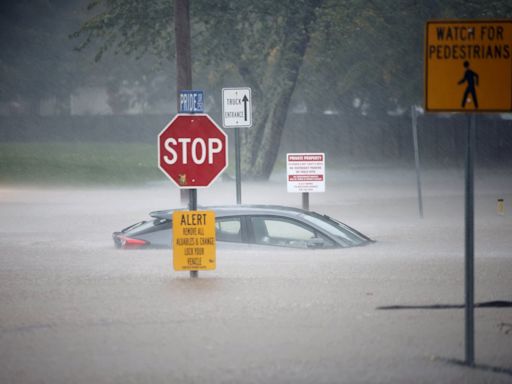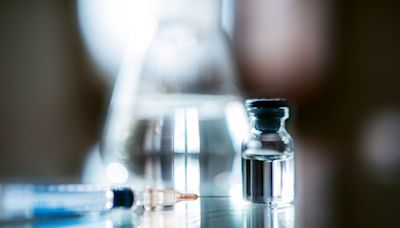Search results
The Cell is a film about a psychologist who enters the mind of a comatose serial killer to find his latest victim. The film explores the themes of schizophrenia, abuse, and redemption, and features a visual style influenced by surrealism and expressionism.
The Cell: Directed by Tarsem Singh. With Jennifer Lopez, Colton James, Dylan Baker, Marianne Jean-Baptiste. An F.B.I. Agent persuades a social worker, who is adept with a new experimental technology, to enter the mind of a comatose serial killer in order to learn where he has hidden his latest kidnap victim.
- (110K)
- Crime, Horror, Sci-Fi
- Tarsem Singh
- 2000-08-18
- Overview
- The nature and function of cells
- The molecules of cells
A cell is a mass of cytoplasm that is bound externally by a cell membrane. Usually microscopic in size, cells are the smallest structural units of living matter and compose all living things. Most cells have one or more nuclei and other organelles that carry out a variety of tasks. Some single cells are complete organisms, such as a bacterium or yeast. Others are specialized building blocks of multicellular organisms, such as plants and animals.
What is cell theory?
Cell theory states that the cell is the fundamental structural and functional unit of living matter. In 1839 German physiologist Theodor Schwann and German botanist Matthias Schleiden promulgated that cells are the “elementary particles of organisms” in both plants and animals and recognized that some organisms are unicellular and others multicellular. This theory marked a great conceptual advance in biology and resulted in renewed attention to the living processes that go on in cells.
What do cell membranes do?
The cell membrane surrounds every living cell and delimits the cell from the surrounding environment. It serves as a barrier to keep the contents of the cell in and unwanted substances out. It also functions as a gate to both actively and passively move essential nutrients into the cell and waste products out of it. Certain proteins in the cell membrane are involved with cell-to-cell communication and help the cell to respond to changes in its environment.
cell, in biology, the basic membrane-bound unit that contains the fundamental molecules of life and of which all living things are composed. A single cell is often a complete organism in itself, such as a bacterium or yeast. Other cells acquire specialized functions as they mature. These cells cooperate with other specialized cells and become the building blocks of large multicellular organisms, such as humans and other animals. Although cells are much larger than atoms, they are still very small. The smallest known cells are a group of tiny bacteria called mycoplasmas; some of these single-celled organisms are spheres as small as 0.2 μm in diameter (1μm = about 0.000039 inch), with a total mass of 10−14 gram—equal to that of 8,000,000,000 hydrogen atoms. Cells of humans typically have a mass 400,000 times larger than the mass of a single mycoplasma bacterium, but even human cells are only about 20 μm across. It would require a sheet of about 10,000 human cells to cover the head of a pin, and each human organism is composed of more than 30,000,000,000,000 cells.
A cell is enclosed by a plasma membrane, which forms a selective barrier that allows nutrients to enter and waste products to leave. The interior of the cell is organized into many specialized compartments, or organelles, each surrounded by a separate membrane. One major organelle, the nucleus, contains the genetic information necessary for cell growth and reproduction. Each cell contains only one nucleus, whereas other types of organelles are present in multiple copies in the cellular contents, or cytoplasm. Organelles include mitochondria, which are responsible for the energy transactions necessary for cell survival; lysosomes, which digest unwanted materials within the cell; and the endoplasmic reticulum and the Golgi apparatus, which play important roles in the internal organization of the cell by synthesizing selected molecules and then processing, sorting, and directing them to their proper locations. In addition, plant cells contain chloroplasts, which are responsible for photosynthesis, whereby the energy of sunlight is used to convert molecules of carbon dioxide (CO2) and water (H2O) into carbohydrates. Between all these organelles is the space in the cytoplasm called the cytosol. The cytosol contains an organized framework of fibrous molecules that constitute the cytoskeleton, which gives a cell its shape, enables organelles to move within the cell, and provides a mechanism by which the cell itself can move. The cytosol also contains more than 10,000 different kinds of molecules that are involved in cellular biosynthesis, the process of making large biological molecules from small ones.
Britannica Quiz
Parts of a Cell Quiz
Specialized organelles are a characteristic of cells of organisms known as eukaryotes. In contrast, cells of organisms known as prokaryotes do not contain organelles and are generally smaller than eukaryotic cells. However, all cells share strong similarities in biochemical function.
Cells contain a special collection of molecules that are enclosed by a membrane. These molecules give cells the ability to grow and reproduce. The overall process of cellular reproduction occurs in two steps: cell growth and cell division. During cell growth, the cell ingests certain molecules from its surroundings by selectively carrying them through its cell membrane. Once inside the cell, these molecules are subjected to the action of highly specialized, large, elaborately folded molecules called enzymes. Enzymes act as catalysts by binding to ingested molecules and regulating the rate at which they are chemically altered. These chemical alterations make the molecules more useful to the cell. Unlike the ingested molecules, catalysts are not chemically altered themselves during the reaction, allowing one catalyst to regulate a specific chemical reaction in many molecules.
Are you a student? Get Britannica Premium for only 24.95 - a 67% discount!
Learn More
Biological catalysts create chains of reactions. In other words, a molecule chemically transformed by one catalyst serves as the starting material, or substrate, of a second catalyst and so on. In this way, catalysts use the small molecules brought into the cell from the outside environment to create increasingly complex reaction products. These products are used for cell growth and the replication of genetic material. Once the genetic material has been copied and there are sufficient molecules to support cell division, the cell divides to create two daughter cells. Through many such cycles of cell growth and division, each parent cell can give rise to millions of daughter cells, in the process converting large amounts of inanimate matter into biologically active molecules.
"The Cell" takes a shocking, riveting mind trip into the dark and dangerous corridors of a serial killer's psyche -- a psyche that holds the key to saving...
- (166)
- Tarsem Singh
- R
- Jennifer Lopez
Check out the official The Cell (2000) Trailer starring Jennifer Lopez! Let us know what you think in the comments below. Watch on FandangoNOW: https://www....
A psychotherapist enters the mind of a comatose serial killer to find his latest victim in this thriller. Read the plot outline, cast and crew, trivia, and user reviews of The Cell on IMDb.
Aug 18, 2000 · A social worker enters the mind of a serial killer to save his latest victim in this bizarre and visionary film by Tarsem. Roger Ebert praises its imagination, style and story, despite some technical flaws and online criticism.






